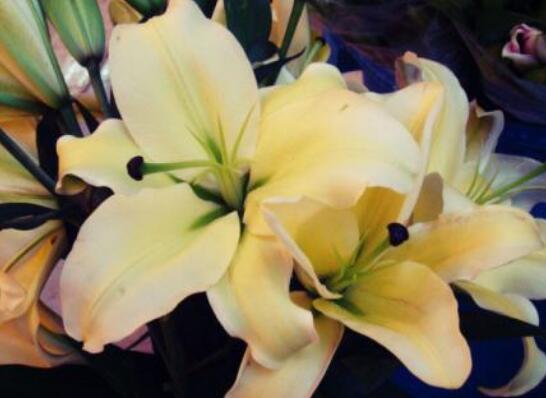
形容京都的句子
太液秋风、 琼岛春阴 、金台夕照、 蓟门烟树、 西山晴雪 、玉泉趵突、 卢沟晓月、 居庸叠翠
求描写京都繁华的古诗词,谢谢
Introduction to KyotoIf you go to only one place in all of Japan, Kyoto should be it. Not only is it the most historically significant town in the nation, this former capital was also the only major Japanese city spared from the bombs of World War II. As such, it's rife with temples, shrines, imperial palaces, and traditional wooden homes. In nearby Nara, another former capital -- one even more ancient than Kyoto -- is Japan's largest bronze Buddha and more historic temples.Even though its well-preserved architecture and relics are what put Kyoto on the sightseeing map, I've always felt that its scenes from daily life are what make the city exceptional. Kyoto is home to the nation's greatest concentration of craft artisans, making Kyoto famous for its shops dealing in textiles, dyed fabrics, pottery, bambooware, cutlery, fans, metalwork, umbrellas, and other goods. No wonder Kyoto is also home to 20% of Japan's national treasures.As your Shinkansen bullet train glides toward Kyoto Station, however, your first reaction is likely to be great disappointment. There's Kyoto Tower looming in the foreground like some misplaced spaceship. Kyoto Station itself is strikingly modern and unabashedly high tech, looking as though it was airlifted straight from Tokyo. Modern buildings and hotels surround the station on all sides, making Kyoto look like any other Japanese town.In other words, as Japan's seventh-largest city with a population of about 1.5 million people, Kyoto hasn't escaped the afflictions of the modern age. Yet it has always led a rather fragile existence, as a look at any of its temples and shrines will tell you. Made of wood, they've been destroyed through the years by man, fire, and earthquake and have been rebuilt countless times. Come and explore; you'll soon understand why I consider Kyoto to be Japan's most romantic city despite modernization. No one who comes to this country should miss the wealth of experiences this ancient capital has to offer.
求日本京都著名景点的英文介绍
Arashiyama(岚山)Arashiyama (岚山 ?) is a district on the western outskirts of Kyoto, Japan. It also refers to the mountain across the Ōi River, which forms a backdrop to the district.Notable tourist sites in Arashiyama includeThe Iwatayama Monkey Park on the slopes of Mount Arashiyama. Over 170 monkeys live at the park. While the monkeys are wild, they have become accustomed to humans. The park is located on a small mountain not far from the Saga-Arashiyama rail station. Visitors can approach and photograph the monkeys. At the summit is a fenced enclosure, from within which visitors can feed the monkeys. The romantic Moon Crossing Bridge (渡月桥,Togetsukyō), notable for its views of cherry blossoms and autumn colors on the slopes of Mt Arashiyama. The tombstone of the Heike courtesan Kogo of Sagano. Tenryū-ji, the main temple of the Rinzai school, one of the two main sects of Zen Buddhism in Japan. The hamlet of Kiyotaki, a small scenic village at the base of Mt Atago, the home to a notable Shinto shrine. Matsuo Shrine, half a mile south of the area, which is home to a blessed spring. It is also one of the oldest shrines in the Kyoto area, founded in 700. The alleged restorative properties of the spring bring many local sake and miso companies to the shrine for prayers that their product will be blessed. Kameyama koen has a stone commemorating Zhou Enlai's visited to Arashiyama. He was moved by the cherry blossoms and mountain greenery. The four poems Zhou Enlai wrote about his visit are engraved on a stone monument: Arashiyama in the Rain. Nijō Castle(二条城)Nijō Castle (二条城 ,Nijō-jō?) is a flatland castle located in Kyoto, Japan. The castle consists of two concentric rings of fortifications, the Ninomaru Palace, the ruins of the Honmaru Palace, various support buildings and several gardens. The surface area of the castle is 275,000 square meters, of which 8000 square meters is occupied by buildings.HistoryPresent plan of Nijō Castle (click for detailed view)In 1601, Tokugawa Ieyasu, the founder of the Tokugawa Shogunate, ordered all the feudal lords in Western Japan to contribute to the construction of Nijō Castle, which was completed during the reign of Tokugawa Iemitsu in 1626. Parts of Fushimi Castle, such as the main tower and the Kara Gate, were moved here in 1625-26.[1] It was built as the Kyoto residence of the Tokugawa Shoguns. The Tokugawa Shogunate used Edo as the capital city, but Kyoto continued to be the home of the Imperial Court. Kyoto Imperial Palace is located north-east of Nijo Castle.The central keep, or donjon, was struck by lightning and burned to the ground in 1791.In 1788, the Inner Palace was destroyed by a city-wide fire. The site remained empty until it was replaced by a prince's residence transferred from the Kyoto Imperial Palace in 1893.In 1867, the Ninomaru Palace was the stage for the declaration by Tokugawa Yoshinobu, returning the authority to the Imperial Court. Next year the Imperial Cabinet was installed in the castle. The palace became imperial property and was declared a detached palace. During this time, the Tokugawa hollyhock crest was removed wherever possible and replaced with the imperial chrysanthemum.In 1939, the palace was donated to the city of Kyoto and opened to the public the following year.Ryōan-ji(龙安寺)Ryōan-ji (Shinjitai: 竜安寺, Kyūjitai: 龙安寺 ?, The Temple of the Peaceful Dragon) is a Zen temple located in northwest Kyoto, Japan. Belonging to the Myoshin-ji school of the Rinzai branch of Zen Buddhism, the temple is one of the Historic Monuments of Ancient Kyoto, a UNESCO World Heritage Site.The site of the temple was originally a Fujiwara family estate. It eventually came into the hands of the Hosokawa clan branch of the Fujiwaras. Hosokawa Katsumoto inherited the residence, and lived here before the Ōnin War. Katsumoto willed the war-ravaged property to be converted into a Zen sect temple complex after his death. Later Hosokawa emperors are grouped together in what are today known as the Seven Imperial Tombs at Ryoan-ji. The burial places of these emperors -- Uda, Kazan, Ichijō, Go-Suzaku, Go-Reizei, Go-Sanjō, and Horikawa -- would have been comparatively humble in the period after their deaths. These tombs reached their present state as a result of the 19th century restoration of imperial sepulchers (misasagi) which were ordered by Emperor Meiji.[1]Ryōan-ji's tsukubai (蹲踞 ?), which is a small basin provided at Japanese Buddhist temples for visitors to purify themselves by the ritual washing of hands and rinsing of the mouth.An object of interest near the rear of the monks quarters is the carved stone receptacle into which water for ritual purification continuously flows. This is the Ryōan-ji tsukubai (蹲踞 ?), which translates literally as crouch; and the lower elevation of the basin requires the user to bend a little bit to reach the water, which suggests supplication and reverence.[2] The kanji written on the surface of the stone are without significance when read alone. If each is read in combination with 口 (kuchi), which the central bowl is meant to represent, then the characters become 吾, 唯, 足, 知. This is read as ware tada taru (wo) shiru and translates literally as I only know plenty (吾 = ware = I, 唯 = tada = only, 足 = taru = plenty, 知 = shiru = know). The meaning of the phrase carved into the top of the tsukubai is simply that what one has is all one needs and is meant to reinforce the basic anti-materialistic teachings of Buddhism.The absence of a dipper is intended to imply that the water is for the soul only and that it is necessary to bend the knee in humility in order to receive its blessing.Kiyomizu-dera(清水寺)Kiyomizu-dera (清水寺 ?), full name Otowa-san Kiyomizu-dera (音羽山清水寺 ?) is an independent Buddhist temple in eastern Kyoto. The temple is part of the Historic Monuments of Ancient Kyoto (Kyoto, Uji and Otsu Cities) UNESCO World Heritage site.[1] Not one nail is used in the whole temple. The temple should not be confused with Kiyomizu-dera in Yasugi, Shimane, which is part of the 33-temple route of the Chūgoku 33 Kannon Pilgrimage through western Japan.[2]其实这些都是维基百科找来的,本来想给链接的,百度说我有广告,只贴了部分,其他的可用google 找,包括景点介绍,历史什么的很全的。
日本京都清水寺求签,请翻译或解签,谢谢
第四吉累有兴云志君恩禄未封若逢侯手印好事始总总第四 吉累有兴云志拼命地要出人头地,可以看出你的志向。
君恩禄未封但是遗憾地是,你的不成熟还不能得到居上位者的认同。
若逢侯手印然而,就像是如果已经写了好文章的话,就立刻得到认同般地,好好传递自己的心思是很重要的。
好事始总总好事也似乎会越来越接踵而起吧。
愿望:能实现吧。
如果这样的话,终生幸福吧。
疾病:变得迟迟地才会治好吧。
遗失物:迟迟地才找到吧。
盼望的人:会出现吧。
旅行:途中要忍耐各式各样的困难吧。
盖新居、搬家、结亲缘、交往:万事都好吧。



